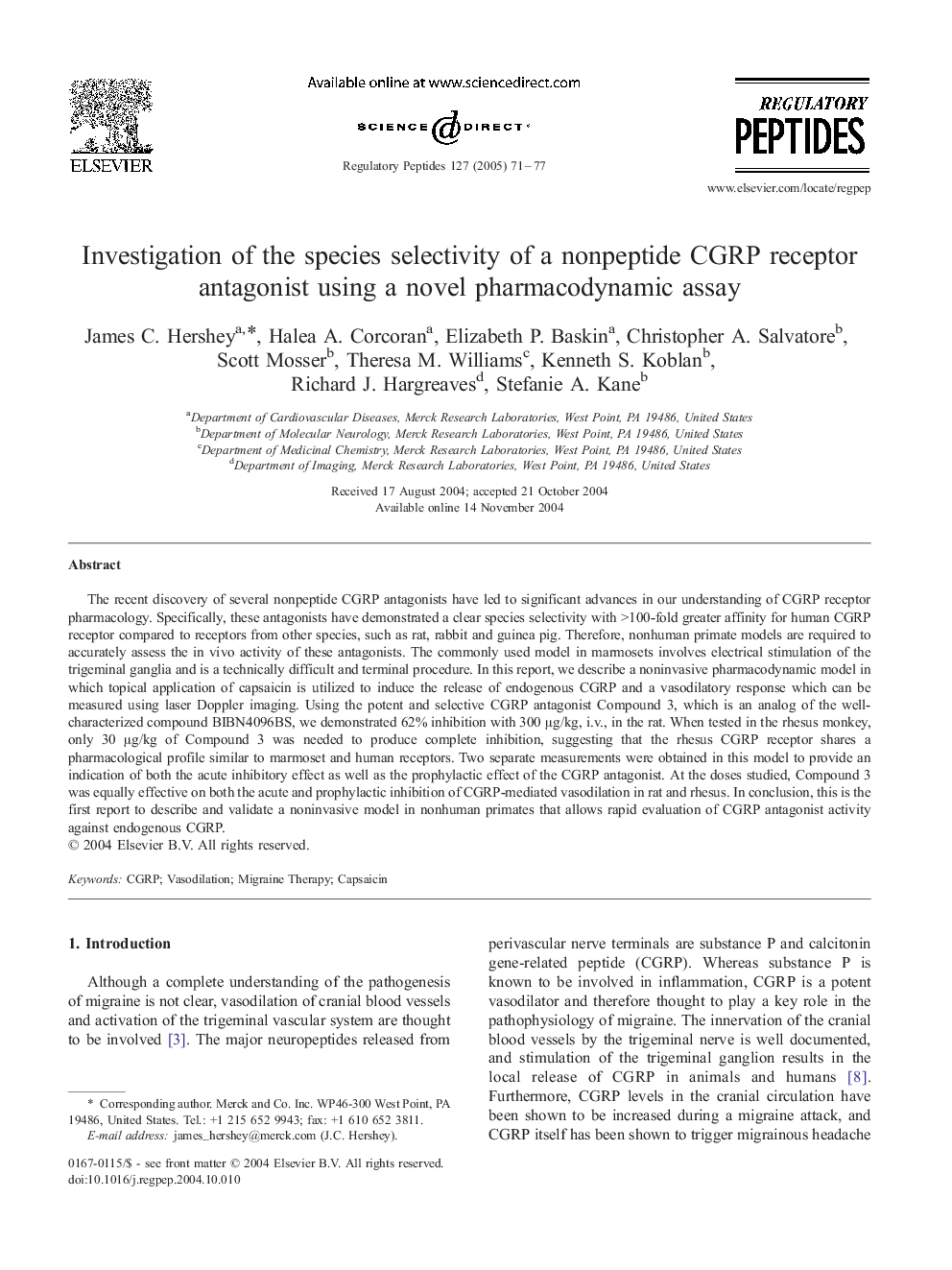| Article ID | Journal | Published Year | Pages | File Type |
|---|---|---|---|---|
| 9894443 | Regulatory Peptides | 2005 | 7 Pages |
Abstract
The recent discovery of several nonpeptide CGRP antagonists have led to significant advances in our understanding of CGRP receptor pharmacology. Specifically, these antagonists have demonstrated a clear species selectivity with >100-fold greater affinity for human CGRP receptor compared to receptors from other species, such as rat, rabbit and guinea pig. Therefore, nonhuman primate models are required to accurately assess the in vivo activity of these antagonists. The commonly used model in marmosets involves electrical stimulation of the trigeminal ganglia and is a technically difficult and terminal procedure. In this report, we describe a noninvasive pharmacodynamic model in which topical application of capsaicin is utilized to induce the release of endogenous CGRP and a vasodilatory response which can be measured using laser Doppler imaging. Using the potent and selective CGRP antagonist Compound 3, which is an analog of the well-characterized compound BIBN4096BS, we demonstrated 62% inhibition with 300 μg/kg, i.v., in the rat. When tested in the rhesus monkey, only 30 μg/kg of Compound 3 was needed to produce complete inhibition, suggesting that the rhesus CGRP receptor shares a pharmacological profile similar to marmoset and human receptors. Two separate measurements were obtained in this model to provide an indication of both the acute inhibitory effect as well as the prophylactic effect of the CGRP antagonist. At the doses studied, Compound 3 was equally effective on both the acute and prophylactic inhibition of CGRP-mediated vasodilation in rat and rhesus. In conclusion, this is the first report to describe and validate a noninvasive model in nonhuman primates that allows rapid evaluation of CGRP antagonist activity against endogenous CGRP.
Keywords
Related Topics
Life Sciences
Biochemistry, Genetics and Molecular Biology
Biochemistry
Authors
James C. Hershey, Halea A. Corcoran, Elizabeth P. Baskin, Christopher A. Salvatore, Scott Mosser, Theresa M. Williams, Kenneth S. Koblan, Richard J. Hargreaves, Stefanie A. Kane,
